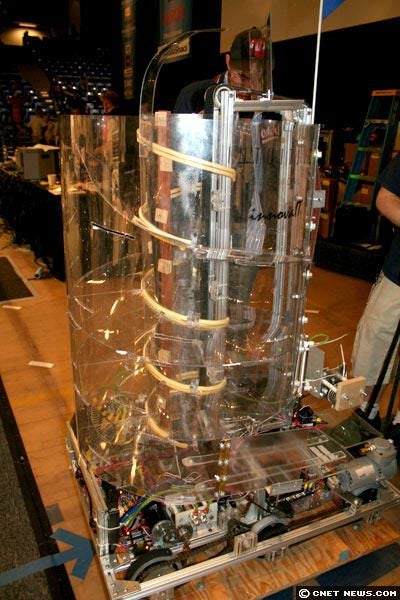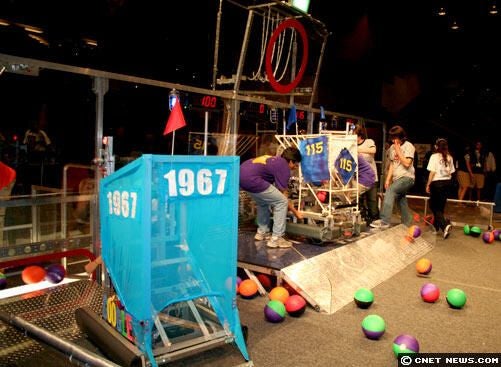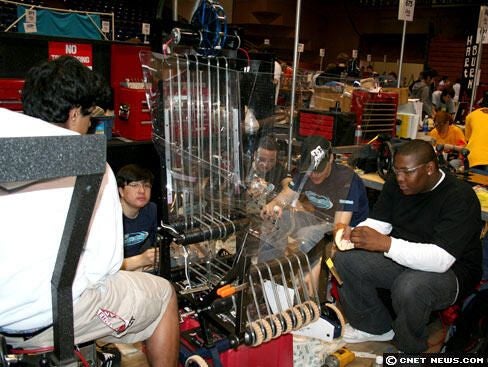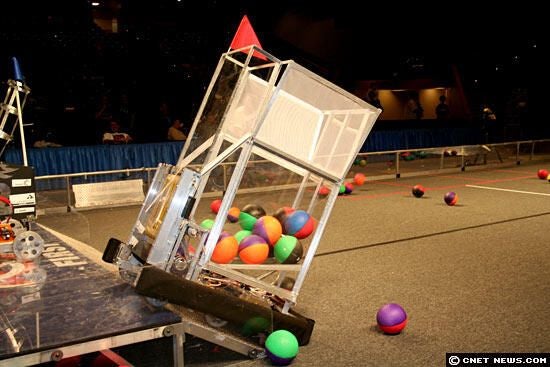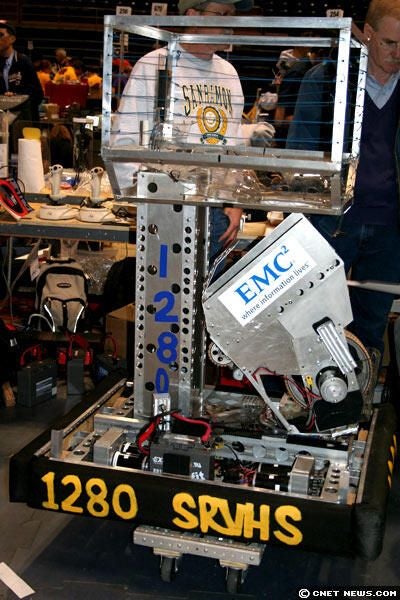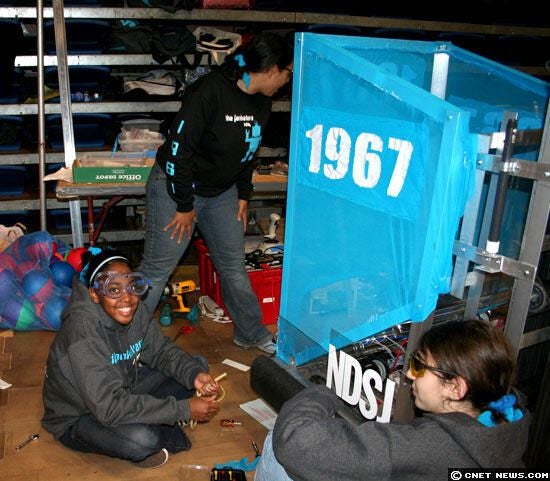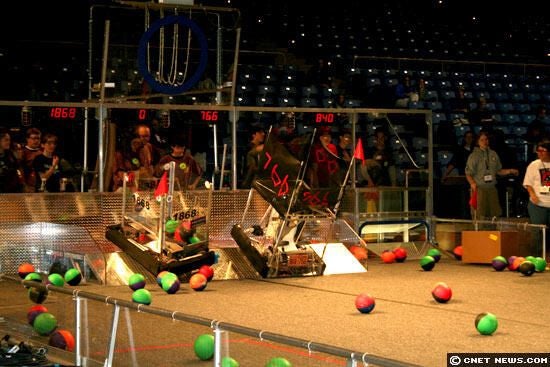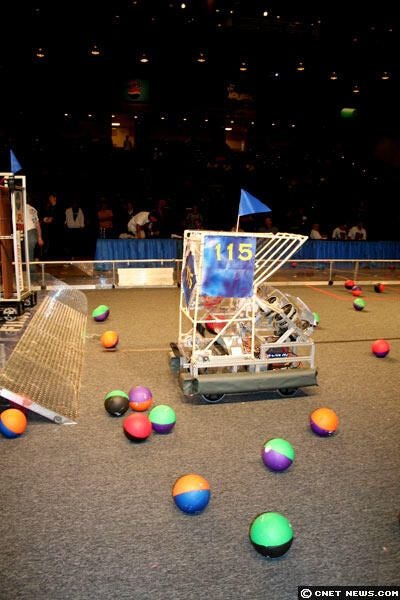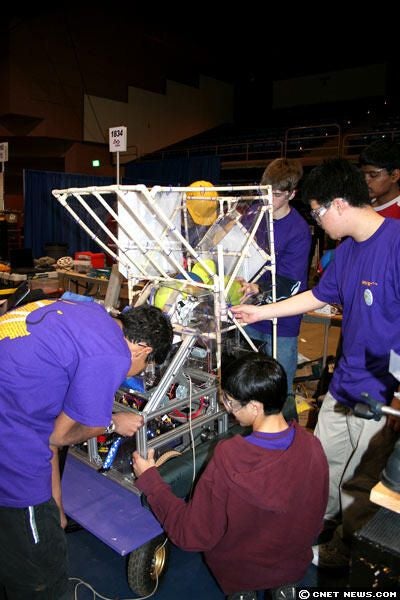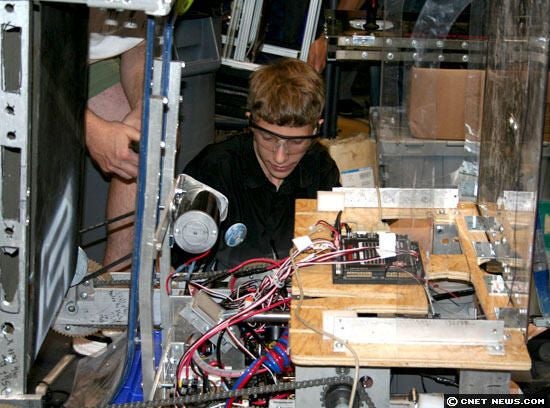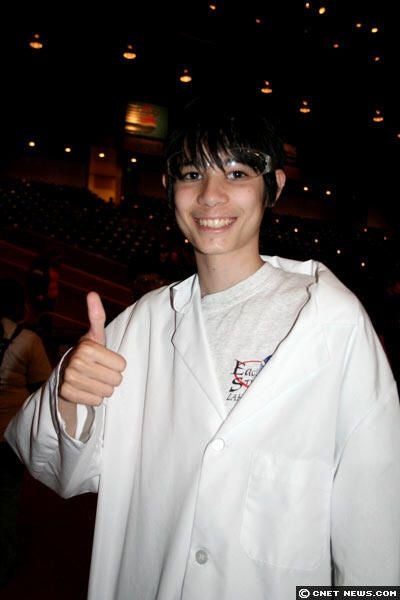Photos: Bots hit the court
Image 1 of 11
A robot tailored to shoot hoops. It’s sponsored by Intuitive Surgical, maker of robotic devices designed to perform specialized surgery in place of medical teams. The spiral mechanism of the robot includes a conveyer belt that buoys and shoots Nerf balls from the top of the bot.
The robot of team 1967, or the Janksters, spins its wheels in the corner of the field after a practice round, during which it had to shoot Nerf balls into a hoop autonomously for 10 seconds. During the remaining roughly 2 minutes of play, the team operated the robot by radio control, commanding it to suck up Nerf balls from the ground and try to shoot them into one of four holes. Pictured, team helpers clean up the field of play following the practice round.
The Cheesy Poofs, a team of 40 students from Bellerman High School in San Jose, Calif., are the so-called Yankees of the Silicon Valley regional finals, having won the last seven years in a row. Justin Larente, a high school senior, said their robot can shoot 15 balls into a hoop in 4 to 5 seconds with 100 percent accuracy.
The game itself lasts roughly 2 minutes, with two robots measuring 2 feet wide by 4 feet high on the field. For the first 10 seconds, the robot must run in autonomous mode and make as many baskets as possible within the time allotted. The robots must drive up onto a ramp to finish, as pictured here.
One of the robots sponsored by EMC, pictured at the team’s work area. All of the robots must include a funnel-like opening to catch and throw Nerf balls in the game.
The Janksters are an all-girl team from San Jose’s Notre Dame High School, a Catholic school. Google was apparently looking to sponsor an all-girl team and eventually hooked up with the Janksters, whose robot sports a homemade logo of the search giant.
The field of play is about the size of a small soccer field, but it’s hardly intimidating, cluttered with candy-colored Nerf balls. Instead of bot fights, the robots try to throw the Nerfs through round holes in translucent walls at each end of the field, and electronic scoreboards on the wall tick higher when a ball makes it through.
To compete, teams must pony up $6,000 for registration and any other amount up to $3,500 needed to augment the initial supplies. Once registered, the teams are given three boxes of hardware and software, including motors, wheels, transmission, radio controller and control board. They are given engineering software and a programming language called Easy C that allows them to write a program for the robot’s on-board computer.
If they’re not playing a practice round, high school teens clad in jeans and team T-shirts are either milling around (sometimes in hand-holding pairs) or engrossed in welding, drilling or just fiddling with their bots.
Teams are given three boxes of donated hardware and software worth roughly $10,000 to build a basic robot. The boxes include motors, wheels, transmission and a radio controller and control board.
Michael Takahashi is a high school freshman at Los Altos High School, which is in Palo Alto near Stanford University, and one of 20 kids on its robotics team. He was seen Thursday milling around the practice field playing his PSP game.

-
-
Account Information
Contact Bill Detwiler
- |
- See all of Bill's content
